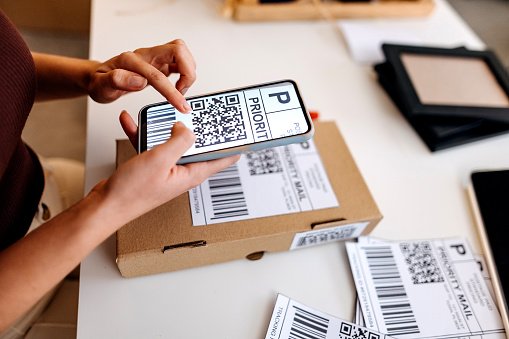Introduction.
Starting a dropshipping business is exciting, especially when you see the potential for earning without the hassle of handling inventory.
But there’s one thing that can make or break your success: how easy it is for potential customers to find you online. That’s where SEO (Search Engine Optimization) comes in.
If your website doesn’t show up when someone searches for your products, it’s like having a store with no sign or address. You might have the best products and prices, but without visibility, no one will know you’re there.
SEO for dropshipping is not just a nice-to-have; it’s essential if you want to stand out in a crowded market.
I’ll walk you through everything you need to know to boost your online presence, attract more visitors, and increase sales—without feeling overwhelmed or needing a tech degree.
Why SEO Is Critical for Your Dropshipping Business
If you’ve set up a dropshipping store, you might already know that your competition is fierce. Whether you’re selling gadgets, clothes, or accessories, chances are, someone else is selling the same items.
This makes it harder to stand out, and one of the most effective ways to do that is through SEO.
When done right, SEO helps your store rank higher on Google, making it more likely for people to find your website when they search for products like yours.
Here’s why SEO should be a priority:
- Increased Visibility – Without SEO, your store might not show up on search engine results pages (SERPs). SEO gets your website in front of potential customers, which is the first step in making a sale.
- Cost-Effective Marketing – Compared to paid ads, SEO can be much more affordable. While it takes time to see results, the long-term benefits of free, organic traffic make it worth the effort.
- Targeted Traffic – SEO helps you attract people who are already interested in what you’re selling. That’s way more effective than casting a wide net and hoping for the best.
- Builds Trust and Credibility – Websites that rank higher in search results are often viewed as more trustworthy. People are more likely to click on links that appear at the top of their search results because they assume these sites are more reliable.
What Does SEO for Dropshipping Look Like?
SEO isn’t a one-size-fits-all thing. It’s a combination of different strategies that all work together to improve your site’s performance in search results. Here’s how to get started:
1. Keyword Research
Before you can optimize your store, you need to know which keywords to target. Keywords are the search terms people use when looking for products like yours.
For instance, if you sell eco-friendly yoga mats, potential customers might search for phrases like “best eco-friendly yoga mats” or “yoga mats for beginners.”
There are tools like Google Keyword Planner, Ubersuggest, and Ahrefs that can help you find popular keywords in your niche.
Focus on long-tail keywords (phrases with 3 or more words) because they’re often less competitive and more specific.
2. Optimizing Your Product Pages
Each product page on your website should be optimized for SEO. Here’s how:
- Title Tags: Your product titles should include the keyword you’re targeting. For example, instead of just calling it “Yoga Mat,” use a title like “Eco-Friendly Yoga Mat for Beginners.”
- Product Descriptions: Write unique, informative product descriptions that include your keywords naturally. Google doesn’t like duplicate content, so avoid copying product descriptions from suppliers.
- Alt Text for Images: Since Google can’t “see” your images, it relies on alt text to understand them. Include keywords in the alt text of your product photos to improve SEO.
- URL Structure: Keep your URLs clean and simple. Ideally, they should include the product name and keyword. For example, www.yourstore.com/eco-friendly-yoga-mat.
3. On-Page SEO
On-page SEO refers to everything you can do directly on your website to improve its visibility. This includes things like:
- Meta Descriptions: These are short descriptions that appear under your website’s title on search engine results. They don’t directly impact rankings, but a compelling meta description can increase click-through rates (CTR).
- Header Tags (H1, H2, H3): Use header tags to structure your content. Your main title should be an H1, subheadings H2, and so on. This helps Google understand what your page is about.
- Internal Linking: Link to other relevant pages within your store. For instance, if someone is looking at a yoga mat, you could link to yoga accessories or apparel. This helps Google crawl your site and keeps users engaged.
4. Off-Page SEO
Off-page SEO refers to actions that happen outside of your website but still influence your rankings. The most important off-page SEO factor is backlinks.
These are links from other websites that point to your store. The more high-quality backlinks you have, the more authoritative your site will seem to Google.
Ways to build backlinks include:
- Guest Blogging: Write articles for other websites in your niche and include a link back to your store.
- Influencer Marketing: Partner with influencers in your niche to promote your products and link back to your site.
- Social Media: Share your products on social media and encourage others to share your content. Social signals don’t directly affect rankings, but they can drive traffic and lead to backlinks.
5. Mobile Optimization
More than half of all web traffic comes from mobile devices, so your dropshipping store needs to be mobile-friendly.
If your site isn’t optimized for mobile, customers will likely leave, which hurts your rankings.
Make sure your store’s design is responsive (adapts to different screen sizes) and that pages load quickly on mobile devices.
6. Improve Site Speed
Google prioritizes websites that load quickly, so this is crucial for both SEO and user experience. You can use tools like Google PageSpeed Insights to check your site’s speed and get suggestions for improvement.
Some common fixes include optimizing images, reducing the number of plugins, and using a content delivery network (CDN).
7. Content Marketing
Creating helpful and engaging content is another powerful SEO tool. Blogging is a great way to attract organic traffic.
You can write articles related to your niche, answer customer questions, or provide product guides. The more content you have, the more opportunities for Google to index your site and drive traffic to it.
For example, if you sell yoga products, you could write blog posts like “Top 10 Yoga Poses for Beginners” or “How to Choose the Right Yoga Mat.”
8. Track Your Results
SEO isn’t a set-it-and-forget-it strategy. You need to monitor your progress and make adjustments over time. Tools like Google Analytics and Google Search Console allow you to track your traffic, see which keywords are driving visitors, and identify areas that need improvement.
FAQs
Q: How long does it take to see results from SEO?
SEO isn’t an instant fix. It usually takes a few months to start seeing meaningful results. However, with consistent effort, you should see improvements in your rankings, traffic, and sales over time.
Q: Do I need to hire an SEO expert for my dropshipping store?
You don’t necessarily need to hire an expert, especially when you’re just starting. There are plenty of tools and guides available to help you learn the basics of SEO. However, if you have the budget and want to focus on running your business, hiring an expert could save you time and effort.
Q: What if I’m competing with big companies?
Competing with larger companies can be tough, but it’s not impossible. Focus on niche markets, create high-quality content, and build relationships with influencers. Even small businesses can rank well with the right SEO strategy.
Conclusion
SEO might seem overwhelming at first, but with a little effort and consistency, it’s a game-changer for your dropshipping business.
By focusing on the right keywords, optimizing your site, and building backlinks, you can dramatically increase your chances of ranking higher on Google and attracting more customers.
The question now is: Are you ready to put these SEO strategies into action and see your dropshipping business thrive?





GIPHY App Key not set. Please check settings